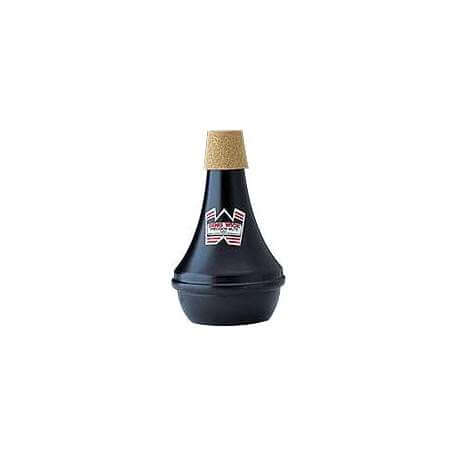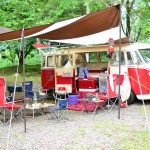is an orchestral work for piccol
It is an orchestral work for piccolo, 2 flutes (1 of whom doubles on piccolo), 1 oboe, 2 clarinets plus an additional bass clarinet, 1 bassoon, 2 horns, 2 trumpets (plus an optional 2 cornets), 3 trombones, no tuba, percussion, tympani, 6 first violins, 6 second violins, 4 violas, 3 cellos, 2 double basses, Eb clarinet (as an additional chair, not doubled), 5 saxes (soprano, 2 alto, tenor & baritone) & a trombone soloist. It is highly typical of band sets to have multiple copies of parts, especially flute, clarinet, sax, trumpet, trombone & percussion. Questions or Comments about this site? The following is considered to be Standard Instrumentation: Following many of the titles in our Brass Ensemble catalog, you will see a set of five numbers enclosed in square brackets, as in this example: The bracketed numbers tell you how many of each instrument are in the ensemble. Other Required and Solo parts follow the strings: Principal auxilary instruments (piccolo, english horn, bass clarinet, contrabassoon, wagner tuba, cornet & euphonium) are linked to their respective instruments with either a "d" if the same player doubles the auxiliary instrument, or a "+" if an extra player is required. Any additional instruments (Piano in this example) are indicated by "w/" (meaning "with") or by using a plus sign. The following is considered to be Standard Instrumentation: Following many of the titles in our String Ensemble catalog, you will see a set of four numbers enclosed in square brackets, as in this example: These numbers tell you how many of each instrument are in the ensemble. Thus, this string quartet is for 2 Violas and 2 Cellos, rather than the usual 2110. Strings are a standard 44322 configuration (4 first violin, 4 second violin, 3 viola, 2 cello, 2 bass). Percussion is abbreviated following the brass. The second example is common for a concert band or wind ensemble piece. Titles with no bracketed numbers are assumed to use "Standard Instrumentation." 
 Titles listed in our catalog without bracketed numbers are assumed to use "Standard Instrumentation."
Titles listed in our catalog without bracketed numbers are assumed to use "Standard Instrumentation."  This ficticious work is for 2 flutes (plus piccolo), 1 oboe, 3 clarinets plus alto and bass clarinets, 2 bassoons, 5 saxes (soprano, 2 altos, tenor & bari), 2 trumpets (plus 2 cornets), 3 trombones, euphonium, tuba, tympani, percussion and double bass. Unless otherwise noted, we will use this system for both orchestra and band works (in most band scores, Trumpet precedes Horn, and sometimes Oboe & Bassoon follow Clarinet). The first number stands for Violin, the second for Viola, the third for Cello, and the fourth for Double Bass. These are linked to their respective principal instruments with either a "d" if the same player doubles the instrument, or a "+" if an extra player is required.
This ficticious work is for 2 flutes (plus piccolo), 1 oboe, 3 clarinets plus alto and bass clarinets, 2 bassoons, 5 saxes (soprano, 2 altos, tenor & bari), 2 trumpets (plus 2 cornets), 3 trombones, euphonium, tuba, tympani, percussion and double bass. Unless otherwise noted, we will use this system for both orchestra and band works (in most band scores, Trumpet precedes Horn, and sometimes Oboe & Bassoon follow Clarinet). The first number stands for Violin, the second for Viola, the third for Cello, and the fourth for Double Bass. These are linked to their respective principal instruments with either a "d" if the same player doubles the instrument, or a "+" if an extra player is required.  Note the inclusion of the saxes after bassoon for this band work. The following is considered to be Standard Instrumentation: Following some titles in our Orchestra & Band catalogs, you will see a numeric code enclosed in square brackets, as in these examples: The bracketed numbers tell you the precise instrumentation of the ensemble. Sometimes strings are simply listed as "str," which means 44322 strings. The system used above is standard in the orchestra music field. This is standard orchestral nomenclature.
Note the inclusion of the saxes after bassoon for this band work. The following is considered to be Standard Instrumentation: Following some titles in our Orchestra & Band catalogs, you will see a numeric code enclosed in square brackets, as in these examples: The bracketed numbers tell you the precise instrumentation of the ensemble. Sometimes strings are simply listed as "str," which means 44322 strings. The system used above is standard in the orchestra music field. This is standard orchestral nomenclature.
Letters that are duplicated (as in A in this example) indicate multiple parts. Instruments shown in parenthesis are optional and may be omitted. The first set of numbers (before the dash) represent the Woodwinds. Thus, the Copland Fanfare shown above is for 3 Trumpets, 4 Horns, 3 Trombones, no Euphonium, 1 Tuba and Tympani. The numbers represent only distinct parts, not the number of copies of a part. And finally, here is one more way to visualize the above code sequence: Flute (doubles or with additional Piccolo), Oboe (doubles or with additional English Horn), Clarinet (doubles or with additional Bass Clarinet), Bassoon (doubles or with additional Contrabassoon), Saxophones (band music only, showing SATB voicing), Horn (doubles or with additional Wagner Tuba), Trumpet (doubles or with additional Cornet), Trombone (doubles or with additional Euphonium), Tuba (doubles or with additional Euphonium), Strings (1st & 2nd Violin, Viola, Cello, Bass). This woodwind quartet is for 1 Flute, no Oboe, 1 Clarinet, 1 Bassoon, 1 Horn and Piano. Any additional instruments (Tympani in this example) are indicated by a "w/" (meaning "with") or by using a plus sign. Please contact us at orders@hickeys.com, All Contents 1994-2022 Hickey's Music Center | Created in harmony with The Cyrus Company. The Beethoven example is typical of much Classical and early Romantic fare. Whenever this occurs, we will separate the first four digits with commas for clarity. Sometimes there are instruments in the ensemble other than those shown above. Please contact webmaster@hickeys.com, Questions about an order? There is tympani. Note: This system lists Horn before Trumpet. There is no low brass. Titles with no bracketed numbers are assumed to use "Standard Instrumentation." For orchestral music, saxes are at the end (see Saxophones below. Multiples, if any, are not shown in this system. Saxophones, when included in orchestral music (they rarely are) will be shown in the "other instrument" location after strings and before the soloist, if any. Strings are represented with a series of five digits representing the quantity of each part (first violin, second violin, viola, cello, bass). Example 3 - MacKenzie: (a fictional work, by the way). However for band music, they are commonly present and therefore will be indicated after bassoon as something similar to "SAATB" where S=soprano, A=alto, T=tenor and B=baritone. The set of numbers after the dash represent the Brass. Also, it should be noted that Euphonium can be doubled by either Trombone or Tuba. Note also that the separate euphonium part is attached to trombone with a plus sign. There is no separate number for Bass Trombone, but it can generally be assumed that if there are multiple Trombone parts, the lowest part can/should be performed on Bass Trombone. In this case, the winds are all doubled (2 flutes, 2 oboes, 2 clarinets and 2 bassoons), and there are two each horns and trumpets.
- Glamnetic Nails Where To Buy
- Oversized Pearl Necklace Costume
- Steve Madden Men's Boots With Zipper
- Replica Designer Caps
- Does Hobby Lobby Sell Candle Wax
- La Sonic Jewelry Cleaner Instructions
- Fear Of God Essentials T-shirt Stone/oat
- Accuquilt 8 Inch Cube Patterns
- Plastic Cookie Cutters For Playdough
- Octopus Pump Model 1012 Manual
- Who Makes Motorcraft Agm Batteries
- Joy Hotel Amsterdam Email Address
- Oil Stains On Clothes After Washing
- Black Kevlar Sewing Thread
- Home Depot Floor Cutter Rental
- Survivor Series 2022 Ticketmaster
- Westover School Head Of School
- Amethyst Wedding Band Set
is an orchestral work for piccol 関連記事
- 30 inch range hood insert ductless

-
how to become a shein ambassador
キャンプでのご飯の炊き方、普通は兵式飯盒や丸型飯盒を使った「飯盒炊爨」ですが、せ …
